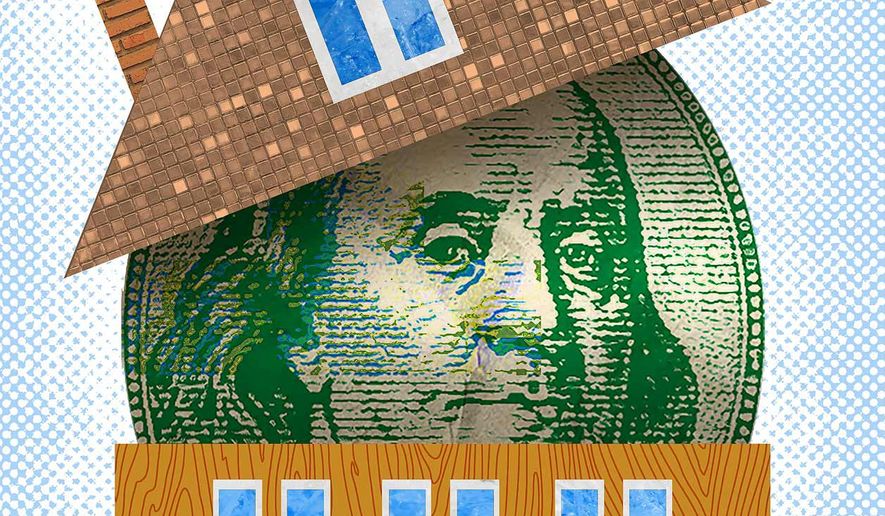OPINION:
Americans have their noses to the window of another crisis — the periodic Congressional drama about the federal debt ceiling.
If the ceiling is not raised, we are warned the federal government will default. But the store beyond the window is an illusion — the horrors of a cashless government only materialize if the Biden Administration and Federal Reserve will it so.
The two political parties wrangle like dysfunctional spouses — live on daytime TV.
Democrats in Congress and pundits argue that they helped raise the ceiling when the Republicans were in charge. It’s required to pay for programs and commitments already in place, and if the ceiling is not raised, social security benefits won’t get paid, the Navy would be stranded at sea and so on.
A good deal of that is nothing more than demagoguery and hysterics — call in Dr. Phil.
Under current law in FY2022, the Congressional Budget Office estimates that the government will spend $5.5 trillion but only take in $4.4 trillion. Over the next decade, annual increases in the debt held by the public would average $1.3 trillion.
If Congress does not raise the debt ceiling, the Treasury will have money—just not enough for everything. It could prioritize interest on the national debt, social security benefits, the military, Medicare, Medicaid and other benefits for mothers and young children.
Federal law enforcement and prisons would need funding. Still, the bureaucrats at the FTC and Justice Department Antitrust and Civil Rights Divisions could be furloughed—along with most other government agencies.
How pleasant it might be for local school boards, universities and state governments to not receive new mandates from Washington for the duration.
Funding could be suspended for regional agencies like the Appalachian Regional Commission, which tend to depend on federal programs more than economic development. And for NPR, which is endowed and richer than many private broadcasters and cancels conservative voices.
Overall, it would look like a government shutdown from a failure to pass a continuing resolution as occurred during the Obama Administration.
With interest on existing debt paid and federal spending forced into balance, the Treasury can issue new bonds to replace those coming due as it always does. Alternatively, the Federal Reserve could buy up expiring debt and fund those purchases by selling Treasuries on its balance sheet, having maturities further out in time.
The S&P might downgrade U.S. debt, as it did in 2011, but some debt can’t be graded. As the U.S. government can print money to pay its obligations, the real risk is the debasement of the currency through overspending, enabled by the Federal Reserve, and inflation. Since March 2020, the Fed has printed $4.3 trillion to purchase U.S. Treasuries to help finance $5 trillion in pandemic relief and stimulus spending.
Pandemic enhanced entitlements — for example, the refundable Child Tax Credit, more extensive food stamp checks, rental assistance, and larger Affordable Care Act insurance subsidies — have contributed to a drop in the adult labor force participation rate and worker shortages, an overhang in spending power and soaring inflation.
Making permanent that kind of overspending could spell stagflation, really engender fears that the value of U.S. Treasuries could be eroded by 1970s-style inflation, push up borrowing costs and create the mother of all fiscal crises. Then the half of all American households that pay no income tax would have to join the upper middle class and wealthy by paying for entitlements just as Europeans do.
Many of the programs in the reconciliation bill have expiration dates within the 10-year tax-funding window that will be difficult for future congresses — be they Republican or Democrat-controlled — to let lapse. Even the scaled-back reconciliation package will push up the annual deficit to at least $1.6 trillion.
Majority Leader Mitch McConnell and Republican Senators should agree to increase the federal debt ceiling by just enough to permit a federal deficit of $1.3 trillion as the CBO projects for current law—not a cent more.
That may require a government shutdown to get the job done but unlike the 2013 affair, Republican actions properly explained could be a political asset.
The GOP needs to stand up for fiscal sanity.
To get there, though, the Republican congressional leadership needs therapy.
To pass the recent $1 trillion infrastructure bill, the GOP provided Speaker Pelosi with 13 Republican votes when six progressive Democrats balked at supporting the measure. Minority Leader Kevin McCarthy got nothing in return — something that has happened at other times in the past.
Sadly, Dr. Phil does family issues, not fiscal policy and hardball politics.
I’m a doctor too, have a couch and would be happy to hold their hands.
• Peter Morici is an economist and emeritus business professor at the University of Maryland and a national columnist.




Please read our comment policy before commenting.